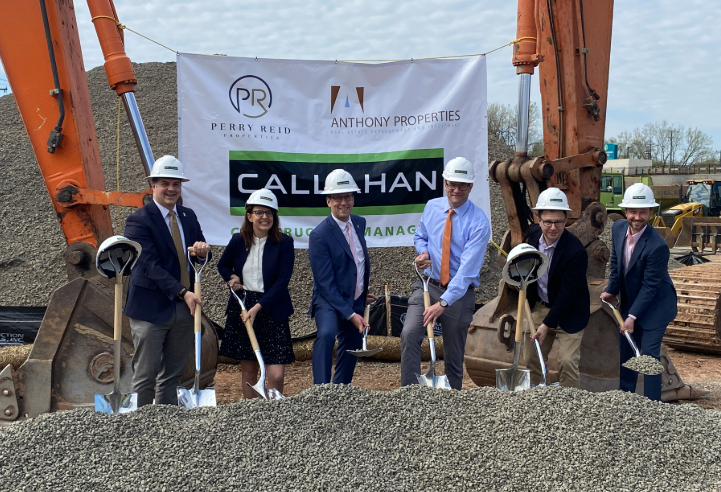News: Connecticut
Posted: October 15, 2008
Complete late season pavement projects now
Insurance industry statistics show that the majority of claims for slips, trips, and falls occur during the winter months. Potholes and broken pavement, which may be hazardous enough during the summer months, can become truly treacherous when hidden by snow or filled with ice. These areas become invitations for negligence lawsuits if not properly addressed.
Therefore, the best time to make asphalt repairs is late fall into early December. Now is the time to check your parking areas for conditions that may accelerate winter asphalt damage or present winter liability issues to your employees, customers and tenants.
Incomplete Pavement Projects Could Lead to Water Damage and Potholes
In addition to liability issues, failure to address your present pavement issues could lead to a wide range of problems in the near future, such as freeze-thaw damage. This type of damage occurs when areas of open or broken asphalt allow water to flow to the pavement base and sub-grade. Freeze-thaw damage can become increasingly worse over the course of the winter. The wet soil also yields under the weight of passing vehicles, causing settlement and breaking of the asphalt above, which can lead to potholes and more expensive repair work in the spring. During a wet winter, seemingly insignificant cracks can develop into gaping potholes with remarkable speed.
The best protection against water penetration is sealing all cracks with a hot-applied rubberized joint sealant that meets federal specifications. The superior flexibility and durability of this product, even at very low temperatures, allows it to block water seepage through cracks under even the harshest winter conditions.
If isolated areas exist where pavement damage is too extensive to be crack sealed, those areas should be cut square, ripped out, regraded, and then repaved with 1.5" of bituminous binder, followed 1.5" of bituminous topcoat asphalt, to provide a new surface. The edges should be emulsified to bond the new pavement to the existing ensuring a seamless transition.
Take Steps to Avoid Negligence
Negligence is the basis for liability in the majority of personal injury claims. In the courtroom, negligence can be shown not only in the failure to use reasonable care in maintenance of the property, but also in the failure to use reasonable care in regular inspection for hazards.
So don't get caught by the liability trap. Check your parking areas and walkways for asphalt damage and deterioration that could potentially injure employees or customer. Quality pavement maintenance not only serves to prevent injuries, but also helps guard against fraudulent claims and unreasonable injury settlements.
Property owners and managers faced with a few areas of broken or cracked pavement in an otherwise sound parking surface often tend to wait to make repairs until the entire parking lot is ready for a new surface coat. However, casualty insurance carriers warn that this is a poor money-management decision. Modern cut and patch paving methods are the most economical way to prolong the life of a parking area while heading off liability problems.
As you make your fall grounds inspection, do it with a legal eye. The few areas of cracks and broken pavement that may seem inconsequential in an otherwise acceptable parking area can have the look of serious negligence in a courtroom.
Safety Inspection Considerations
Periodic inspection should include more than just the condition of the pavement surface.
* Line painting and pavement markings, vehicle travel lanes, and directional travel arrows should all be clearly marked and highly visible to properly control vehicle and pedestrian traffic.
* Handicapped accessible parking spaces, ramps and signage must be ADA compliant to provide appropriate access as well as complying with federal and municipal codes.
* Curbing edges in pedestrian travel areas should be painted for visibility to avoid trip hazards.
* All storm drain gratings should be flush with pavement surfaces to ensure proper drainage and avoid trip hazards.
During these dark winter months, make sure to walk your own parking lot at nighttime, to test for any problems. Illumination and visibility issues are not always obvious in broad daylight and can lead to personal injury claims.
Your pavement contractor can be your best resource in attaining the longest life from your pavement while avoiding liability pitfalls. At U.S. Pavement Services, Inc., we provide our customers with free pavement inspection and consultation services, and regularly provide cost effective solutions to a variety of pavement problems.
Michael Musto is president, U.S. Pavement Services, Inc., Woburn, Mass.
Tags:
Connecticut
MORE FROM Connecticut
Highcap Group brokers $41.1 million sale of two building multifamily portfolio
Norwalk, CT Highcap Group has completed the sale of two luxury multifamily properties with a total of 120 units for a combined purchase price of $41.4 million.








.png)